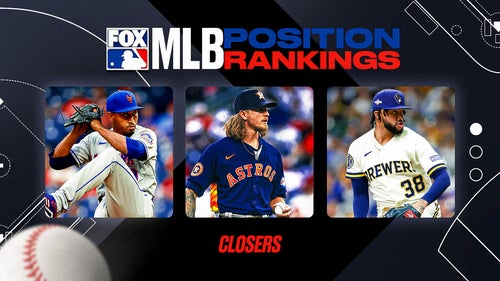
Suspend disbelief to enjoy 'Moneyball'
My advice if you’re seeing “Moneyball”: forget your expectations, leave your preconceived notions at home. Enjoy the film as you would any other, not as a historical document or even as an adaptation, but as entertainment.
Baseball fans, if they nitpick every detail of “Moneyball,” will drive themselves batty. The film, if intended to settle the Stats vs. Scouts argument, would put most of America asleep. But the 133-minute drama actually introduces sabermetrics to a mass audience and presents a fuller portrayal of Athletics general manager Billy Beane than you normally see in the media. Baseball fans and non-baseball fans alike will get something out of it.
I’m a baseball writer, not a film critic, so I can’t give an expert analysis of whether the plot works, the characters are fully developed, etc. But is the film faithful to the spirit of the book? Yes. Are there baseball inaccuracies that made me cringe? A few. But overall, did I like the film? Absolutely.
It’s Hollywood, folks. It’s a story, just as the book was. Author Michael Lewis, for all his brilliance — and the book is beyond brilliant, perhaps the most influential sports book ever written — also downplayed critical details to support his narrative. That’s what writers do, presenting the points they believe are the most relevant to convey a larger message.
Tim Hudson, Barry Zito and Mark Mulder — the pitching heart of those great Athletics teams in the early 2000s — are as prominent as they were in the book. Which is to say, practically invisible. Eric Chavez? Miguel Tejada? They, too, barely show up on screen, too talented to fit on Beane’s “island of misfit toys.”
Fans will see a bolder Art Howe than actually existed and a face-to-face trade discussion between Beane and former Indians GM Mark Shapiro that never could have taken place. Whatever. The essence of the story — Beane’s attempt to revolutionize the way baseball teams operate — remains intact. And quite compelling.
I’m guessing that the average moviegoer will relate to a man who challenges a system that he perceives to be outdated, particularly when that system failed to identify his own flaws as a player. Beane, a former No. 1 draft pick of the Mets, reached the majors at 22 but never came close to fulfilling his promise. The film shows how his past haunts him — and influences his shift in strategy as a GM.
The pace is slow compared with most Hollwood productions, and non-baseball fans might find some of the jargon and statistical references confusing. But similar issues exist with say, films based on a Tom Clancy book about the military, and casual moviegoers usually get the idea.
Frankly, a lot of people will be fascinated just to see how a major league franchise operates, however imprecise some of the portrayals might be. Fans, even writers, rarely get a glimpse of this stuff. The behind-the-scenes elements are part of what made the book so interesting, and in the movie they come to life.
Most interesting of all, Beane is shown to be quite human, not simply a guy who makes trades — or browbeats scouts, for that matter. In talking to Beane over the years, I have been struck by his passion, his intelligence and his love for his daughter, Casey, whom he speaks of frequently. All of that comes through in the film — along with a few displays of his legendary temper.
For me, it was weird seeing Brad Pitt play Beane, even weirder seeing Jonah Hill play the character based on Beane’s former assistant, Paul DePodesta. I know these guys; for maybe the first half-hour I didn’t like Pitt as Beane, thinking, “Billy wouldn’t say this. Billy wouldn’t act like that.” Then I told myself, “Just stop.”
Fans, of course, have their own perceptions of Beane and maybe even DePodesta, who went on to become the GM of the Dodgers and now is a vice-president with the Mets. My advice: Follow the advice of a Lenka song that Beane’s daughter sings in the film and actually was released in 2008, well after the events depicted on screen.
Let it go and just enjoy the show.










